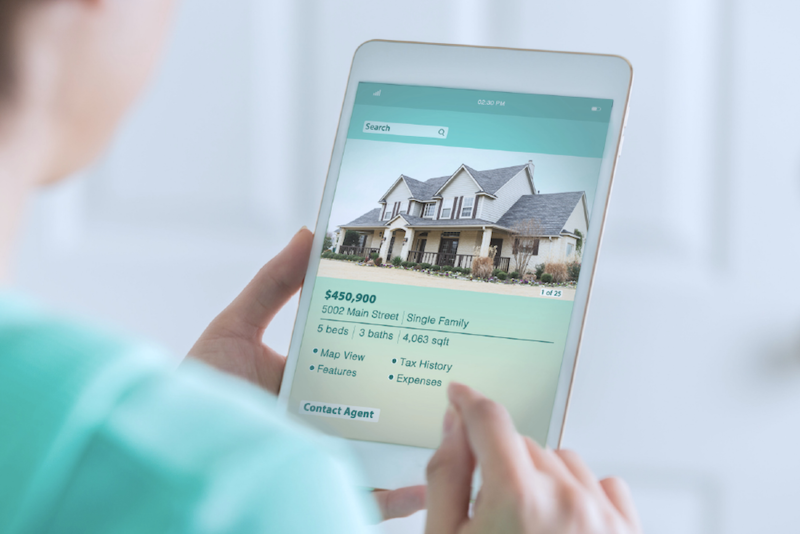7 Pro Tips to Improve the Lead-to-Lease Conversion Process for Your Single-Family Properties

By: Laurie Mega
This is the first in a series of posts to help property managers for single-family homes make their businesses more efficient, reduce costs, and increase profits. This article, one of four that will highlight lessons taught by our training team, will focus on lead-to-lease conversion.
Every single-family property manager looks for opportunities to make their business more efficient, not only to save money but also to increase customer satisfaction among owners and renters. You’ve tweaked your leasing process and looked for places to reduce costs throughout your business already many times over.
But have you looked at your lead-to-lease process holistically and the critical points where you can do even better with technology’s help? Speeding up the lead-to-lease process and honing your conversion throughout your leasing and marketing funnel has big potential benefits, including:
- Reduced vacancy rates and time on market
- Fewer staff members dedicated to marketing and leasing
- Improved team productivity and overall morale
- More and better-qualified leads without committing more time and money
- Clearer, more efficient processes for your company
- A better experience for both tenants and owners
More property managers are turning to tech to make their lead-to-lease process more efficient. Let’s walk through the entire lead-to-lease cycle to highlight some of the ways in which the right tech can help you do the same.
#1. Level Up Your Marketing Process
A key place to look for efficiencies and cost-saving measures is in your marketing strategy and spend – making sure your plan is hyper-focused on finding the most qualified leads before moving them through to the application process.
Customized Listings with a Listing Widget
You’ll want to start by looking at the level of customizability in your listings and the technology you’re using to manage them.
Listing widgets allow you to customize your listings on your website easily. Not only can you carry over your branding to all of your listings, but a good listing widget will let you embed video and virtual 3D tours as well. They also allow you to include a tour-scheduling link so that prospects can schedule showings on the go.
Finally, you can use a listing widget to target your listings to the right search criteria, based on how you want your audience to be found and categorized. Enhanced filters allow prospects to search for homes based on specific amenities, price, or location.
Track Your Property Listings in Real-time
Once your listings are up, you’re certainly not just sitting back, waiting for prospects to come to you. Instead, you’re monitoring those listings to make sure they’re getting the traction they should be.
With customizable software, you’ll be able to decide how you’d like to connect your applicant leads to your marketing process. No matter how you accomplish that, it’s still a good idea to set up your software to measure and compare the number of views versus the number of applicant requests you’re getting. Keep an eye on market trends, and adjust rent price, featured amenities, or other elements as needed.
And it’s always wise to track where your leads are coming from, so you can focus your time and money on the sources with the best ROI.
#2. Use Tech to Track Your Entire Process
With sophisticated lead tracking, no one falls through the cracks. Once a lead comes in, a lead-tracking system (supported by customizable software) can log where every prospect is in the process – from first contact, to tour, to application, to screening and signing.
Lead tracking will also help you get a macro view of your lead-to-lease cycle and make better decisions on optimizing it. You can see where leads are coming from and what kinds of leads they are. You can determine if and when in the process you’re losing leads, as well. All of this information can help you tighten it up and push the right applicants through.
#3. Implement Virtual and Self Tours
Once a rare nice-to-have, virtual and self-guided tours of homes are now a must-have. According to the digital twin tech company, Matterport, listings with immersive photography and virtual tours capture 49 percent more leads, and 95 percent of people they talked to were more likely to call about a property with a 3D virtual tour.
Aside from increasing the number of leads, Buildium points out other notable benefits:
● Expand your lead pool: Prospects can tour your homes anytime, anywhere, which expands the number of people who see your post.
● Collect highly qualified leads: Prospective tenants get more information about your homes upfront, so your leads are more likely to be people for whom your home fits their criteria.
3D property tours can be a bit pricey, but they’re good for the life of the property. Until you decide to update or renovate a property, you can pull out the same virtual tour every time you rent it. Just make sure you review the protocol to make sure nothing has changed.
You may find that this transparency level will make a difference and have a halo effect on your conversion rate. To evaluate virtual tours' effectiveness, try A/B testing (measuring the impact of including and excluding a single variable) on similar properties to understand if the difference is worth the investment across your portfolio.
#4. Activate Online Applications
With an online application, prospects can apply anytime and from anywhere. That means you can capture more prospective tenants, even outside of regular business hours. Usually, applicants can track their application's progress online, eliminating the need to call your office to check on their status.
Of course, you could use an online form to capture applicant information, but an application portal can make your application process even more efficient.
With an application portal, prospective tenants can save and come back to their application at their convenience. When they’re finished, applicants will be notified. Additionally, users of Propertyware can see where the applicant is in the process, including those who haven’t finished their application.
Pro tip: Even if one of your properties isn’t available, it’s also recommended that you set up your application process with a waitlist. In the case the property does become available again in the short term, you’ll already have another solid potential tenant on deck.
#5. Use a Leasing Contact Center
While a detailed rental property listing will eliminate some phone calls, you’re still going to get lots of calls from prospective tenants. Instead of dedicating staff to taking those calls, consider using a leasing call center. They will take on all those questions prospects and applicants have, freeing up your staff for other critical tasks. Still, be aware that any call center team will only be as good as the data you provide. This is precisely why having detailed listings (and technology) to inform any support team is central to its success.
#6. Digitize Tenant Screening
A good online tenant screening tool will allow you to check credit scores and criminal background all in one place. But a great tenant screening tool, like Propertyware’s AI-powered screening, measures the ability to pay against the willingness to do so and other factors to come up with a comprehensive score that assesses the risk of a prospective tenant.
For example, a prospective tenant who carries a lot of debt may not have the best credit rating, but they may still be able – and very willing – to pay their rent. An AI-powered tenant screening tool will take into account their entire payment history and won’t look only at that low credit score.
#7. Get Electronic Lease-Signing and E-Payment Solutions
Just like the online application process, e-signing and e-payment allow approved tenants to complete the lead-to-lease process on the go. This allows you to generate revenue for you and your owners more quickly. With a property management tool, the system will alert you when the lease is signed. Not to mention everything will be recorded and you’ll sidestep needless administrative work.
No doubt you’ve set up a well-oiled lead-to-lease machine that works well for your company. But, as with everything, there’s always room to get better, stronger, and faster. Take a look at your process and see if any of these steps could help your business reduce costs, improve on-market times and vacancy rates, and increase revenue for you and your owners.
While this article is a high-level overview of the leasing process, Propertyware gives users detailed guides to unlimited customizations. If you’re interested in learning more about Propertyware’s software or the detailed onboarding provided to our clients, contact us.







